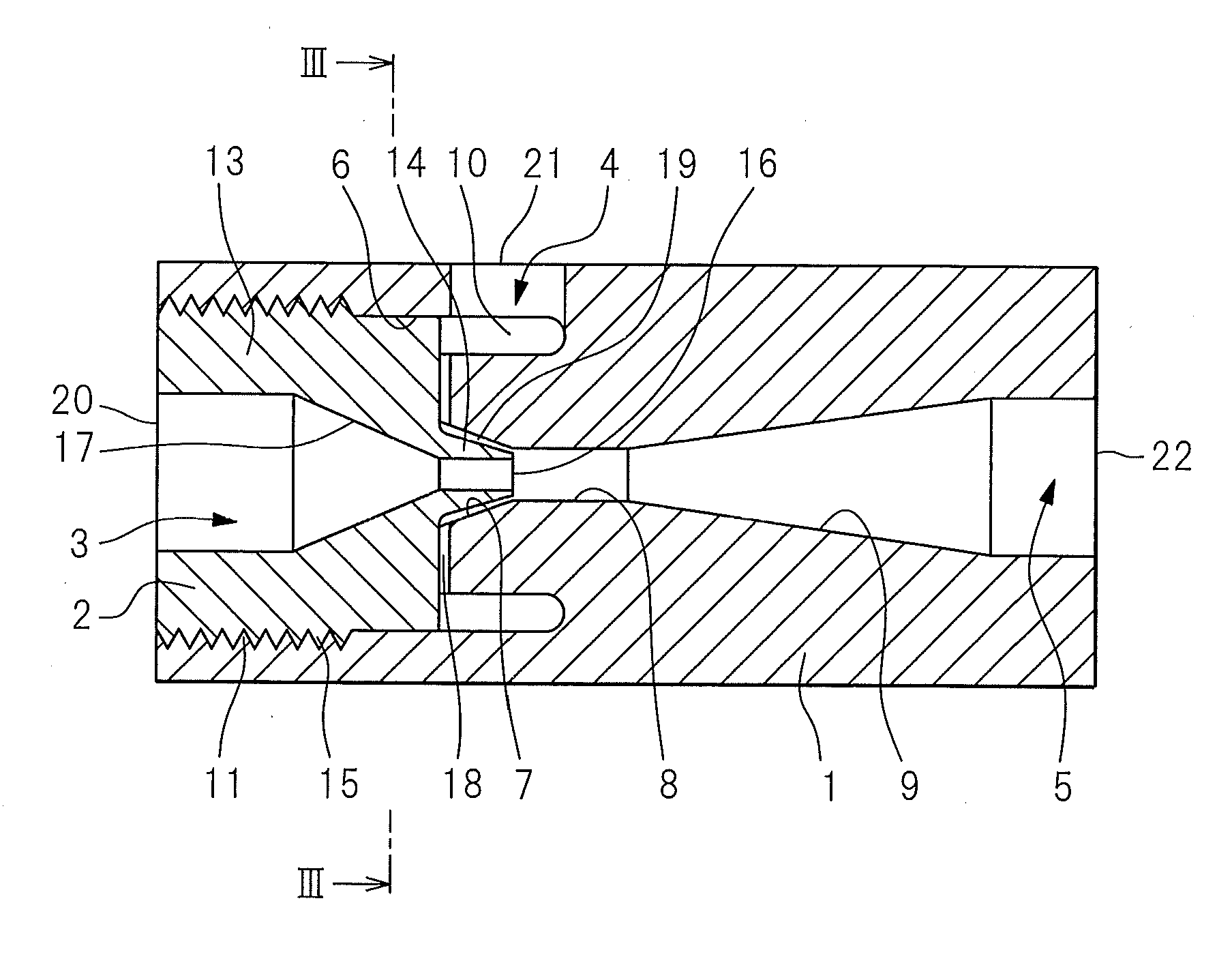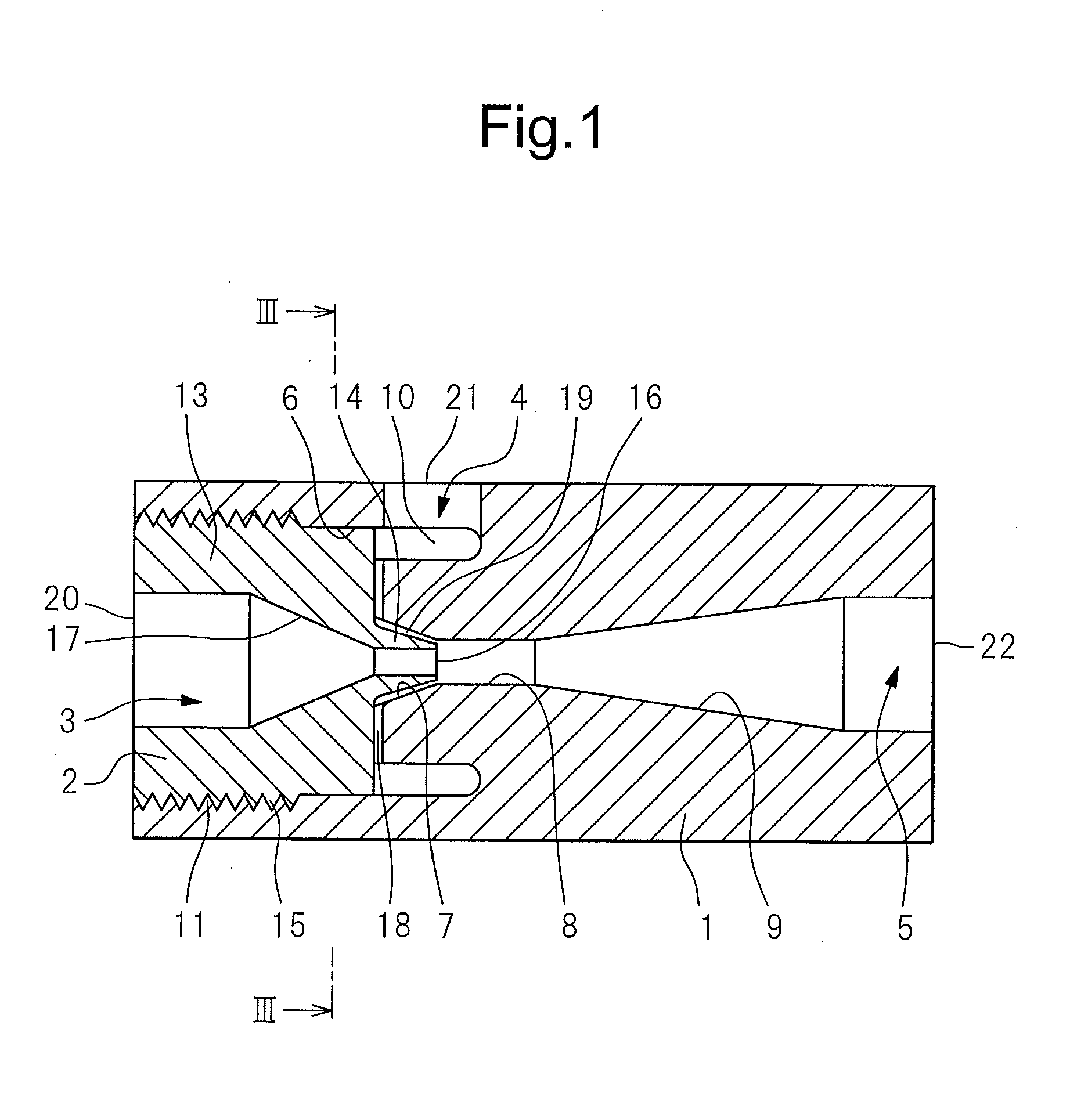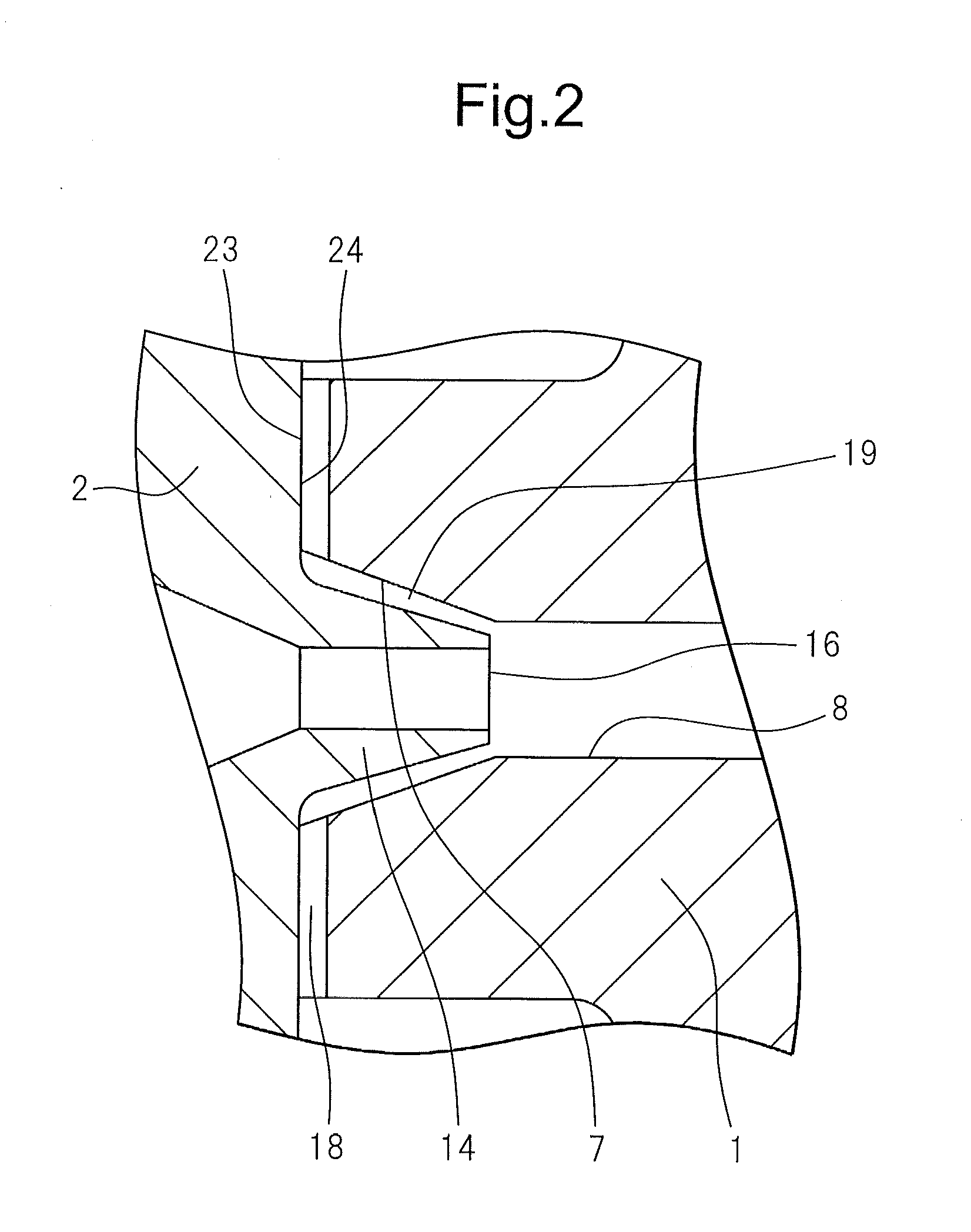In-line-type fluid mixer
a fluid mixer and mixer technology, applied in the field of fluid mixers, can solve the problems of increasing the cost of producing the apparatus, damage to the inner wall, etc., and achieve the effects of increasing the speed of raw water injection, reducing the sectional area, and enhancing the mixing
- Summary
- Abstract
- Description
- Claims
- Application Information
AI Technical Summary
Benefits of technology
Problems solved by technology
Method used
Image
Examples
first embodiment
[0024]An in-line-type fluid mixer according to a first embodiment of the invention will be described below with reference to FIGS. 1 to 6. FIG. 1 is a lengthwise sectional view showing the constitution of the in-line-type fluid mixer according to the first embodiment of the invention, and FIG. 2 is an enlarged view of a major portion of FIG. 1. The fluid mixer includes a main body 1 having a substantially cylindrical outer shape, and a nozzle member 2 having a substantially cylindrical outer shape and being fitted to the main body 1.
[0025]The main body 1 is provided, in its one end surface, with a receiving portion 6 into which the nozzle member 2 is fitted and is provided, in its other end surface, with an outlet port 22 that forms an outlet channel 5. The receiving portion 6 has an internally threaded portion 11 formed in the inner circumferential surface thereof at the side of the port. The receiving portion 6 has an circular ring groove portion 10 formed on the bottom surface 23...
example 1
[0040]In Example 1, an apparatus was configured such that the groove portions 12 of the main body 1 were formed in a radially curved manner as shown in FIG. 3, so as to generate a whirling stream. By using this apparatus, the flow rate of the primary fluid (water) introduced into the second inlet channel 4 and the flow rate of the secondary fluid (water) sucked from the first inlet channel 3 were measured, respectively, when the flow rate of the primary fluid flowing through the apparatus varies.
second embodiment
[0049]A second embodiment of the invention will be described with reference to FIGS. 7 and 8. The second embodiment is different from the first embodiment in regard to the configuration of the communication channel 18. Specifically, in the first embodiment, the communication channel 18 is formed by the groove portions 12 on the bottom surface 23 of the receiving portion 6 of the main body 1. In the second embodiment, on the other hand, groove portions are formed on the end surface 24 of the nozzle member 2 at the side of the protruding portion 14. FIG. 7 is a view showing the configuration of a major portion of the in-line-type fluid mixer according to the second embodiment, and is a front view of the nozzle member 2 taken from the side of the outlet port 22 in FIG. 1. The same elements as those in FIGS. 1 and 2 are denoted by the same reference numerals, and the following description will be mainly directed to differences from the first embodiment.
[0050]Referring to FIG. 7, a plura...
PUM
| Property | Measurement | Unit |
|---|---|---|
| inner diameter | aaaaa | aaaaa |
| inner diameter | aaaaa | aaaaa |
| sectional area | aaaaa | aaaaa |
Abstract
Description
Claims
Application Information
 Login to View More
Login to View More - R&D
- Intellectual Property
- Life Sciences
- Materials
- Tech Scout
- Unparalleled Data Quality
- Higher Quality Content
- 60% Fewer Hallucinations
Browse by: Latest US Patents, China's latest patents, Technical Efficacy Thesaurus, Application Domain, Technology Topic, Popular Technical Reports.
© 2025 PatSnap. All rights reserved.Legal|Privacy policy|Modern Slavery Act Transparency Statement|Sitemap|About US| Contact US: help@patsnap.com



